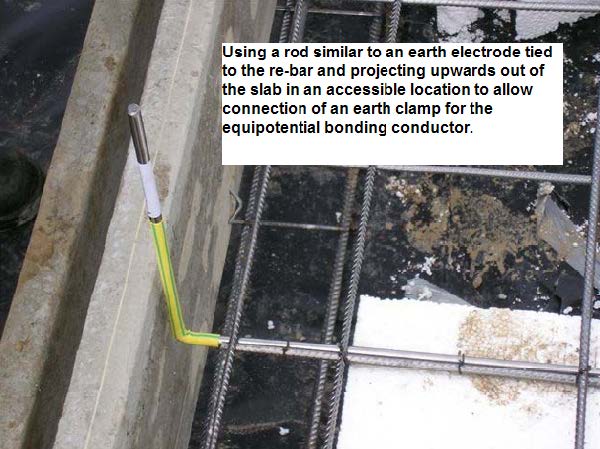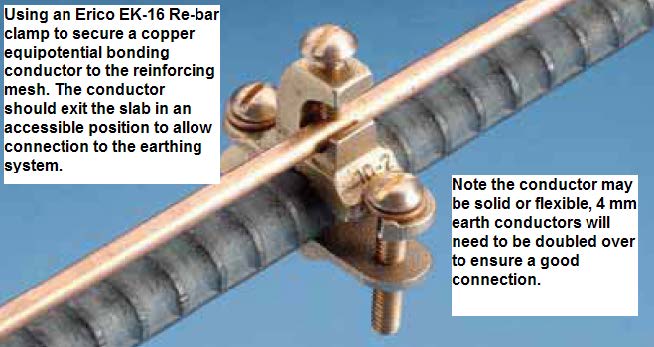Electrical safety in the construction of showers and bathrooms
This information bulletin alerts Licenced Electrical Workers and Contractors to the requirements of:
- Clause 5.6.2.5 Showers and Bathrooms in AS/NZS 3000:2018
Any conductive reinforcing within a concrete floor or wall forming part of a shower or bathroom shall be bonded to the earthing system of the electrical installation to avoid any potential differences that may occur between conductive piping (including taps, drains, etc.) connected to or in contact with the electrical installation earthing system, and the concrete floor or wall.
An equipotential bonding conductor shall be connected between the reinforcing material and any part of the earthing system within the room.


The 2007 Standard introduced a number of changes, and this one is among the most ground-breaking. This requirement has been enforced for many years overseas, and has been included to reduce the increasing number of electric shocks that are recorded each year.
Whilst installing the bonding conductor does not alleviate the cause of the shock, it eliminates the voltage potential. As with all cases of equipotential bonding, it works by maintaining the conductive paths at the same potential.
The main causes for shocks in bathrooms
MEN Shocks
- A high impedance in the neutral of the consumers mains or distribution system causes the neutral current to flow through the MEN connection to earth. This causes a voltage rise on the water pipes, and a voltage potential between the taps and the wet bathroom floor which contains the reinforcing mesh.
Induced Voltages
- An existing cable installed in the concrete induces a voltage onto the reinforcing mesh, causing a voltage potential between the wet bathroom floor and the taps.
Damaged Cable
- An existing, damaged cable installed in the concrete short circuits to the reinforcing mesh, causing a voltage potential between the wet bathroom floor and the taps.